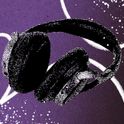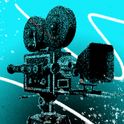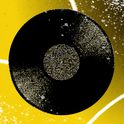by Janna Levin (Weidenfeld & Nicolson, £14.99)
It's always a good sign when a work of art about science takes its form from the ideas under scrutiny. Goethe's Elective Affinities and Michael Frayn's Copenhagen are more than writing about science—their plots, rhythms and shapes are dictated by the theories they discuss. The same is true of cosmologist Janna Levin's novel about Kurt Gödel and Alan Turing. Turing and Gödel never met in real life, but here Levin reimagines their lives and ideas in parallel with and contrast to each other—with herself as "that liar, the third and final point on the triangle, the weak link, the wobbling hinge, the misaligned vertex." Much of Gödel's work on the logic of mathematics was predicated on the "liar's paradox": how one may infer that a person who declares "I am a liar" can be both telling the truth and its opposite. Gödel's proof is considered by many to be the most important result in the history of mathematics. In this novel, Levin's own presence combines with that of the two scientists to make both a scientific and aesthetic case for fiction as a valid part of, if you like, the science of being human.
The novel depicts alternating key moments in both men's lives, switching between them without comment, so that the parallels are obvious but not laboured. Levin shows the Vienna of 1931, portraying Kurt Gödel developing his ideas about the limits of mathematical proof. His theorem demonstrated that there are some truths which exist outside logic. Gödel argues with his mentor, Moritz Schlick and, behind him, Wittgenstein. In Levin's words: "We cannot prove it is true, but we can recognise that it is true. Our minds can see truth. See it even when mathematics cannot. Our minds are bigger than that. Our minds are bigger."
Alongside the pressures of 1930s life in Vienna, Gödel's progressing anorexia and his unconventional relationship with Adele, an actress, Levin shows the contrasting boyhood of Alan Turing in a 1920s Dorset boarding school. A highly functioning autistic, Turing was bullied as a boy but later became famous as the man who cracked the Enigma code during the second world war. He then worked on the development of computers as thinking machines and investigated the possibilities of artificial intelligence.
Levin's evocation of the early days of both scientists is sparse and humane, with a stylistic restraint that creates suggestive analogies between the men's troubled lives, their mathematical ideas and their difficult ends. Gödel starved himself to death, while Turing spent time in jail and was chemically castrated for admitting to homosexual practices, a public humiliation from which he never recovered and which may have led to his suicide in 1954.

Levin's approach may even confer a scientific advantage. The anthropic principle posits that there is a deep connection between the existence of life and the fundamental physics that govern how the universe evolves. If it's true that our ability to perceive the world tells us something about it, then a willingness to include one's self in scientific scrutiny—Levin's great subject—is a huge strength. In How the Universe Got its Spots, which contains some of the clearest, least verbose descriptions of contemporary cosmology that I know, she asks: "Are all of nature's greatest secrets encrypted in our own selves?" This becomes a question proper both to artistic and scientific enquiry.
Aside from being a woman, Levin is by no means a conventional cosmologist. She left school without a diploma but later studied philosophy before being drawn to theoretical physics. She worked at MIT and Cambridge University before taking up a professorship of physics and astronomy at Barnard College, part of Columbia University. She was the first scientist-in-residence at the Ruskin School of fine art and drawing in Oxford. She's married to a musician and she also paints.
In A Madman Dreams of Turing Machines, Levin writes with passion and rhythm about how ideas affect every aspect of life, not just the cerebral and scientific. She depicts the growing eccentricities of Gödel and Turing in ways that are shockingly raw. Gödel becomes skeletal as the result of his paranoia about food. Turing buries silver ingots in a wood during the war. Levin explores this behaviour not because of its oddness, but for how it relates to their respective investigations. I wonder if a non-scientist could have described Gödel's method of working as vividly as she does: "He often sees things in big groups and not sequential steps. He can work backward and reconstruct a more linear formal logical argument, proving one step after the other for the purposes of a seminar… It is self-referential, a tangled loop. A serpent swallowing its own tale."
By portraying Turing's internal arguments with Gödel's ideas in her own mind, Levin also allows the two men a meeting place which they never had in real life—and without falsifying their biographies. Yet even as a novelist, she aligns herself with the scientists whose lives she's depicting. Of girls in a park, she writes: "The girls are not a product of my imagination and I am not a product of yours. There are just some things that we can't strictly prove… This is me, an unreal composite, maybe part liar, maybe not free." These descriptions attempt to place theoretical ideas in the realm of ordinary life, and they're different from the writing of an author not familiar with such concepts—rare glimpses into the mind of a scientist as a manifestation of style.
Reading this novel gives one the sense of having gone through its ideas with a sensitive and authoritative companion. This is comforting if, like me, you've tussled with Douglas Hofstadter's magisterial book Gödel, Escher, Bach: An Eternal Golden Braid and understood only a fraction of its logic. But I did grasp from Hofstadter Gödel's insight that "a statement of number theory could be about a statement of number theory." To a poet, who knows that language has a habit of describing its own processes even as it appears to be delineating the world around it, this makes sense. Hofstadter continues that this "enables statements of number theory to be understood on two different levels: as statements of number theory, and also as statements about statements of number theory." Similarly, writing a novel about Gödel and Turing, which seems such an outrageously difficult and risky project, becomes entirely possible.
Levin rejects a neat ending for her book, and explains why this is consistent with the great ideas she's been explicating: "There is no ending. I've tried to invent one but it was a lie and I don't want to be a liar." The narrative drive is the search for scientific truth, in all its oddness and beauty. I couldn't prove it to you logically but I recognise its veracity artistically. I can't wait to see what Janna Levin does next.












